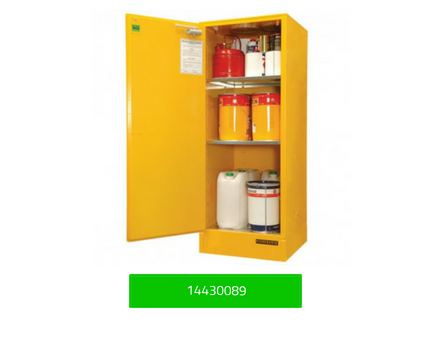
20 Mar 2019
Many liquids like fuels and lubricants might be essential to working in your factory or warehouse, but mishandling or improper storage can have grave consequences. Flammable liquids are volatile substances that are easy to ignite at almost all temperatures and accelerate the burning and spread of fires. As such, they pose a significant risk to people, property, and the environment.
Here are some practical guidelines for storing flammable liquids in the workplace.
General guidelines
The Australian Standard that outlines the requirements for storage and handling of flammable and combustible liquids is AS1940-2017. Though this is not required by law, it is considered industry best practice.
Flammable liquids usually give off a strong vapour, which can ignite if exposed to a heat source such as a flame. These vapours are usually noxious and harmful to breathe and can cause nausea, vomiting, or loss of consciousness. Flammable liquids should be housed in a well-ventilated area, to reduce the vapour concentration in the air, minimising risk of fire and harmful inhalation.

Small quantities of flammable liquids
Section 2 of AS1940 dictates minor storage of flammable liquid as below 50L of liquid per 50m2 of laboratory workspace. In commercial buildings this amount is lower than 10L. Smaller quantities of flammable liquids need not be kept in a flammable liquid cabinet, though it’s best to install such a cabinet to be on the safe side.
Small quantities of flammable liquids should be kept well away from ignition sources such as blow torches, sparks, soldering irons, or electricity. They should also be prevented from encountering incompatible chemicals or combustible materials such as wood or paper. You should have a spill kit ready to deploy if any spillage occurs and have a non-combustible absorbent on standby.
/backsafe-spill-kit-(1).png.aspx)
Pictured: General Purpose Spill Kit
Fire extinguishers and flame-retardant material should also be in close quarters to any flammable liquids. All flammable liquids should be clearly marked with flammable liquid signs, NO SMOKING/NO IGNITION SOURCE signs, and other signage that warns personnel and visitors about the location of flammable liquids.
Flammable liquid storage cabinets
Flammable liquid cabinets are designed for larger quantities of flammable liquids, over 10L per 50m2 in commercial complexes. To be compliant as a dangerous goods container, the cabinet must be designed with high visibility, a double-skin construction, high ventilation, signage as discussed, a spill containment sump, and instructions for operation.

Pictured: Flammable Liquids Storage Cabinet
The spill containment sump must be able to contain the full amount of the largest container in storage, and a quarter of the overall capacity within the cabinet. For storage containers exceeding 10,000L, the sump must have an extra capacity of 10%, and for 100,000L, an extra 5%.
/flammable-liquid-drums-and-containers.jpg.aspx)
Pictured: Non-Metallic Laboratory Cans
Maintain records and safety practices
Ongoing training and reporting of flammable liquids in the workplace is crucial to maintaining safety standards. All drums or containers should be checked for leaks or damage and replaced immediately if found. Those working with flammable liquids should always keep a Safety Data Sheet to inform people of what’s inside the cabinet and any risks they need to be aware of.
To see our range of flammable liquid cabinets that are compliant with the Australian standard, contact BackSafe Australia today.
Back To News Stories